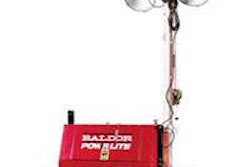Spending by all levels of government on the nation’s highways and transit lines has increased substantially in recent years but steep increases in construction costs have eroded the purchasing power of this investment, according to the U.S. Department of Transportation, which recently released its report documenting the conditions and performance of the nation’s transportation system.
Association of American State Highway and Transportation Officials (AASHTO) News reported that the U.S. DOT report, started in 2007 and released this month, was prepared using 2006 data to satisfy requirements for updates to Congress on the nation’s surface transportation infrastructure and future capital investment needs. (Given the size, complexity, and importance of the report, it has traditionally undergone an extensive review process prior to its release.)
Findings of the document, 2008 Status of the Nation’s Highways, Bridges, and Transit: Conditions and Performance, focus on changes in various indicators since 1997, AASHTO News reported.
That timeframe spans the TEA-21 authorization law era in its entirety (that law was in effect between 1998 and 2003) and the early period of SAFETEA-LU, the authorization law enacted in 2005 that expired in 2009 and has been temporarily extended through next month.
“In nominal dollar terms, combined investment by all levels of government in highway and bridge infrastructure has increased sharply since TEA-21 was enacted,” according to the report, AASHTO News reports. Those expenditures jumped 58 percent between 1997 and 2006.
Capital spending dropped 4.4 percent in constant dollar terms during that timeframe, however, because of construction inflation. The Federal Highway Administration’s Composite Bid Price Index shot up 43 percent between 2004 and 2006 due to notable increases in the prices of such materials as steel, asphalt, and cement, AASHTO News reports.







